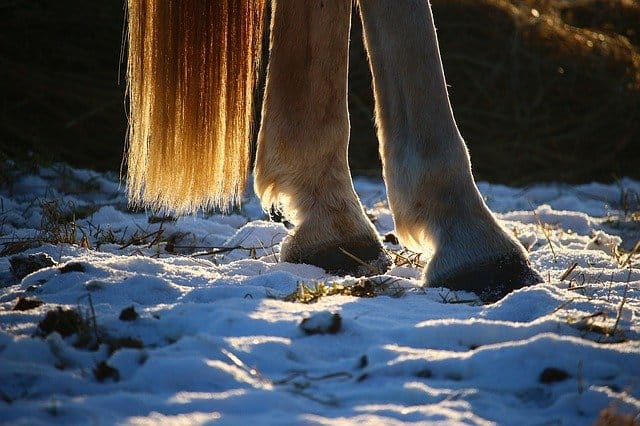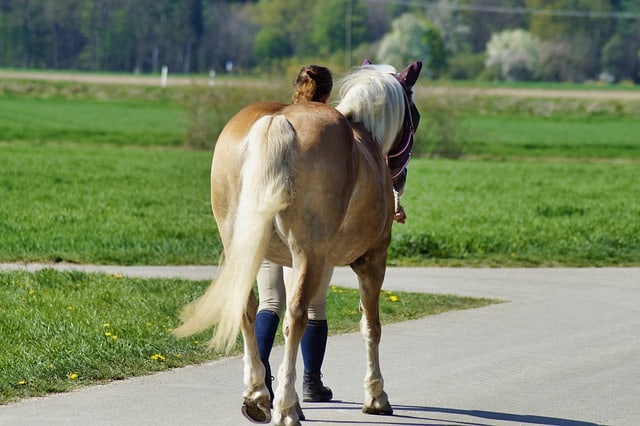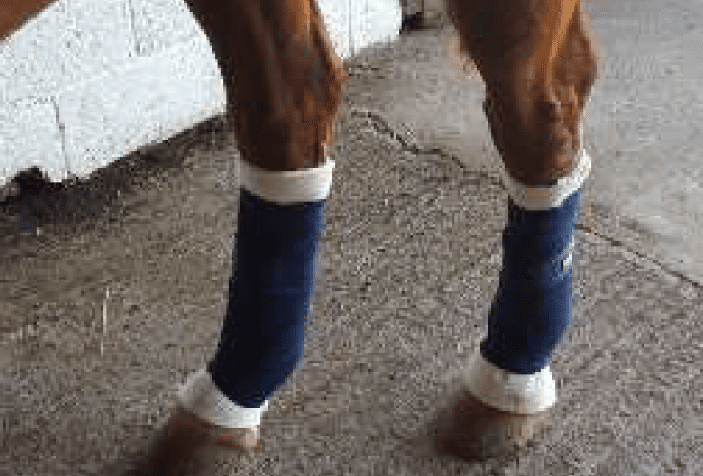The Lymphatic system main functions lie with immunity and combating disease. This system works to regulate body fluids, to transport nutrients and in the removal of waste, bacteria and toxins between the cells and the blood. The lymphatic system, unlike the circulatory system does not have a pump such as the heart and it relies on body movement such as the movement of muscles, tendons and ligaments for it’s flow throughout the body. Therefore occasionally when a horse is left to stand in for a day or so, you may see some filling in its hind legs. This filling will usually normalise after exercise and is generally no cause for concern. However, Lymphangitis, is an inflammation of the Lymphatic System usually caused a bacterial infection. This type of infection is often only seen in one limb, normally a hind limb, and the site of entry of infection can be very small and is not always visible.

Causes of Lymphangitis
The most common cause of Lymphangitis is a bacterial infection; this can be in the form of a small wound, a prod or a scratch that the horse sustained either out in the paddock or during exercise. The site of entry of the infection can be minute, and is not always visible; this is why it is so important to check your horse’s legs after exercise or when taking them in from the paddock, and deal with every cut or abrasion promptly to avoid unnecessary infection. However, even with the most diligent care, a tiny wound may go undetected leading to an episode of Lymphangitis.
Symptoms of Lymphangitis
- The Limb is very swollen, and it is usually a hind limb that is affected.
- The leg will be hot and the Lymph Nodes may be inflamed and visible.
- The horse is usually in a lot of pain, and finds walking difficult.
- The horse will usually have an elevated temperature.
- The horse will be lame on the affected limb

Treatment
With Lymphangitis, it is important to call your Vet at the earliest onset. If the infection progresses, it can cause permanent damage to the tissues of the Leg, leaving your horse with a permanently filled leg and possibly long term lameness. Your Vet will usually administer antibiotics, along with anti-inflammatories and pain relief while steroids may be necessary to control the inflammation.
It is recommended that once the horse is comfortable, that gentle walking be included to help with the circulation of the limb and the reduction of swelling. Cold hosing can also help to reduce the swelling and occasionally the vet may recommend support stable bandages, or gentle massage to improve circulation. It must be remembered that even with prompt action, the horse may be prone to having ongoing problems or circulation issues with the affected limb.

Prevention
As with all illness, prevention is better than cure. Therefore here is our check list to help to prevent further attacks;
- Always check your horse’s legs daily, especially after coming in from the paddock or following exercise.
- Treat all wounds, no matter how small.
- Remember daily exercise is important for your horse’s circulation, so on their day off instead of leaving them in the stable all day, turn them out to the paddock for a few hours.
- If you suspect that your horse has Lymphangitis call your Vet as soon as possible, as the earliest that treatment is administered the better chance your horse has for making a full recovery.
This Article was originally published in the November 2020 Issue of Irish Sport Horse Magazine.
